Comparative review of ventilation and air conditioning systems
Reduced work efficiency, a constant feeling of weakness in the body, increased nervousness, a regular desire to take a nap are often the result of insufficient air exchange. However, proper ventilation and air conditioning can help prevent these problems.
Moreover, it will not be possible to limit oneself only to the natural system - it has several disadvantages. It is necessary to choose the optimal mechanical type of exchange and mixing of air, analyzing the pros and cons of each method.
Let's try together to understand how various ventilation systems work and in which cases one or another variety is used.
The content of the article:
Why is ventilation necessary?
Air renewal helps prevent diseases of the cardiovascular and central nervous system, increased sweating, impaired attention, and chronic diseases in people with weak immunity.
The standard ventilation system allows you to:
- reduce the concentration of dust and other small particles in the air;
- choose a comfortable temperature for work;
- remove exhaust fumes and aggressive components that cause allergies.
Of course, you can open the windows, but then dust and dirty air will fall into the room. And in the cold season, heating costs will increase. Also, drafts negatively affect human health.
Air conditioning process
Even in the warm season, it is problematic to carry out a simple air exchange without the use of special devices. Therefore, it is advisable to use additional equipment.
In summer, the air is moist and warm. Air conditioning will provide him with a cleaning and setting a lower temperature.For example, split systems, industrial air conditioners and chiller fan coil.
But in the cold season, the air is frosty and less humid. Naturally, do not forget about filtering. However, it is still necessary to warm and moisten the air, which it successfully copes with. heater, guaranteeing a rise in temperature to a comfortable level.
This process is often ensured by mixing: cold streams are combined with warm ones. The air is cooled in special chambers due to the ingress of small drops of water.
There are also rooms that require a special approach to the organization of ventilation. For example, in gyms with pools, water constantly evaporates, increasing the level of humidity.
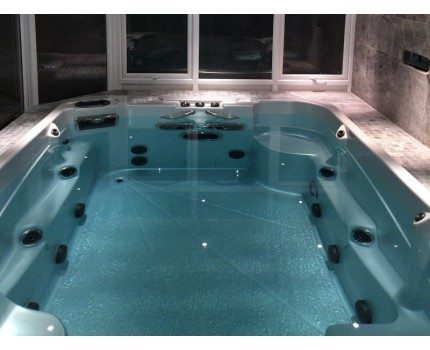
To solve such problems are intended dehumidifiers. The disadvantage of the latter is the lack of ventilation. Air remains in the room, but the moisture level decreases. Therefore, the oxygen concentration decreases, which negatively affects the well-being of people.
Mechanical method of air evacuation
Natural ventilation often does not fulfill its direct functions. Therefore, the need for the use of an artificial system becomes relevant. Its main difference is that it works with coercion.
The mechanical type of ventilation is used not only in industrial production, but also in residential premises. Its action is based on the operation of electric motors, air heaters, fans and filters.
Key advantages of an artificial system over a natural one:
- Efficiency. Transferring practically any amount of air over significant distances in the room.
- Weather independent. Flawless performance of direct functions by the system at any time of the year.
- Additional features. Adjustment of temperature and humidity level, air purification from dust and other small particles.
Mechanical ventilation is divided into channel and non-channel. At the first, air passes through special elongated paths.
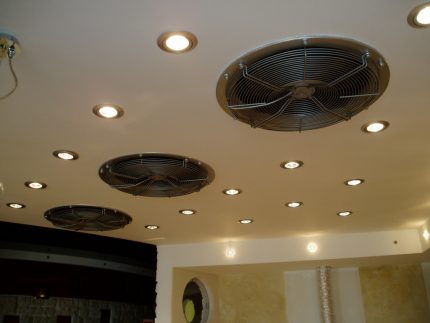
In channelless systems, fans are housed in a special design. They provide an influx of fresh air masses.
Depending on the type of mechanical ventilation, the systems are divided into supply, exhaust and supply and exhaust.
Supply system description
The main objective of this type of ventilation is to provide fresh air to the room. In order for the equipment to perform its functions optimally, complex models are equipped with additional elements that are responsible for cleaning and moisturizing.
The main disadvantage is the lack of air intake. Therefore, the room can not be 100% filled with updated air masses.
The principle of operation and structure
The standard system includes a fan, which is mounted in a transom window. It provides an influx of fresh air in the room. In the latter, the concentration of gases increases. Therefore, there is no room for exhaust air and it leaves the room through special exhaust openings.
A key component of the system is the supply fan. Its main parameters are power, air supply efficiency and pressure in the working area. The requirements for the technical characteristics of the fan directly depend on the length and complexity of the channels.
In addition to this device, the system consists of the following elements:
- gratings;
- valves
- air ducts;
- distributors;
- Filters
- heaters.
Filters are responsible for removing mechanical particles from the air that arrives: dust, insects, debris, etc. They can provide coarse, fine and very fine cleaning. Depending on the characteristics of the work, they are divided into electrostatic, dry and wet.
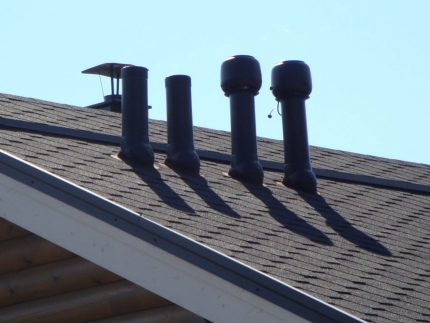
Heaters or heaters are responsible for raising the temperature of the incoming air. They are water and electric type. The first work on the basis of a home heating system. The second power source is an electric network.
As for the additional elements, they can be:
- noise reducing elements;
- dehumidifiers;
- recuperators;
- humidifiers;
- system automation tools;
- and others.
The air receiver must be in a clean place that is protected from dust. A supply chamber should be placed near this structural element.
Where does this method apply?
The mechanical type of flow organization is used for both residential and industrial facilities. Responsible for the whole room or only for a separate part of it, for example, a workplace at the factory. Provides air at optimum temperature.
It also creates special clean zones, even if there is an increased level of toxic substances in other rooms. It can be combined with exhaust and natural ventilation systems.
Read more about how to properly equip the supply ventilation system in this stuff.

Exhaust ventilation characteristic
The exhaust system is the opposite of the supply. Its task is to remove polluted air from the room. There are holistic and collective types.
Structure and principle of operation
Evacuation type ventilation is popular for arranging apartments. Provides a conclusion of the fulfilled or heated air. Exhaust grilles or valves for ventilation usually placed in the upper part of the room. Fresh air enters through special connectors directly from the external environment or through neighboring rooms.
The system can be placed at a certain distance or completely block the source of pollution. If it is possible to limit the point of release of toxic substances, then local ventilation will be effective, and if not, general.
Here the key is fan. It is his power that determines the efficiency of the entire system. There are exhaust devices of low (air flow rate up to 50 m / s), medium - up to 80 m / s and high pressure (up to 200 m / s).
The main elements of this type of ventilation are as follows:
- Fume hoods. Differ in the greatest efficiency. Excessively moist and warm air, heavy gases and dust are removed.
- Suction. Eliminate the maximum amount of harmful substances, taking a minimum of air. Do not prevent the employee from fulfilling duties.
- Exhaust hoods. Designed to remove substances that rise up. There are types whose work is based on natural or forced traction.
- Exhaust panels. Effective for removing dust and hot noxious gases. Actual for workplaces where parts are welded.
- Side suction. It is used when working with large or dimensional objects that are held vertically with metal cords or other means. They have a small diameter (less than 100 mm) and are located away from the work object.
The exhaust system is designed primarily for the evacuation of exhaust air. Given the above structural elements, they are effective for local ventilation.
Nuances of using the system
This type of exhaust ventilation is suitable for rooms with a low concentration of harmful substances. Moreover, the latter can arrive at various levels, in integral and separate flows.
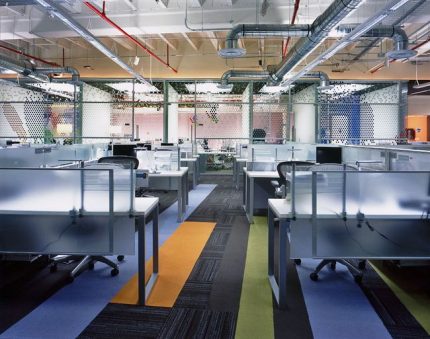
This system is relevant for warehouses, supermarkets, sports facilities, health facilities and residential premises. It is used in industrial premises where toxic substances cannot be avoided. Optimally combined with natural and fresh air ventilation. It can act both locally and provide a general conclusion of the spent masses.
When choosing, you need to analyze the features of the outgoing air. If the latter contains a lot of aggressive substances, then it is advisable to focus on the option with a corrosion-resistant coating.
The essence of supply and exhaust ventilation
This type of air mass renewal indoors is considered one of the most optimal. It allows you to combine the advantages of supply and exhaust systems.
The key design task is to balance the volumes of incoming and outgoing air. If the first prevails, then the pressure in the room increases due to the high concentration of gases, with an increase in the amount of evacuated air it decreases.
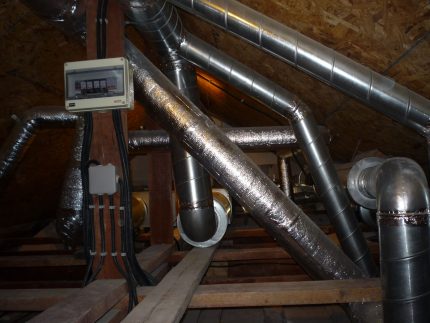
Supply and exhaust ventilation has two varieties. The first is mixing, when clean air through special structural elements enters the room, mixes with the available gases and leaves through special valves.
Another type is embossed ventilation. The system is installed at floor level. The elementary laws of physics work here - the exhaust air has a high temperature, therefore it is displaced by the gases that enter. It exits through the grills located on the ceiling of the room.
But fresh air enters the lower part of the room, where it moves slowly. Therefore, in the working area, in that part of the room where the residents are directly located, comfortable conditions are created for rest and work.
For ventilation by displacement to be effective, it is necessary that the fresh air has a lower temperature than already in the building. For residential premises, the difference is 1-3 ° C, for plants, factories and other facilities with special requirements - 1-5 ° C.
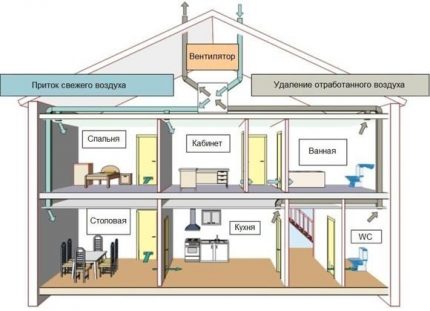
This type of ventilation has both advantages and disadvantages. The advantages include the possibility of use in industrial buildings, which are characterized by the release of toxic substances and elevated temperatures, and high work efficiency.
But the disadvantages include the following:
- the need for relatively large areas for supply air diffusers;
- an increase in the adjacent territory;
- decrease in the effectiveness of the system as a result of the ingress of excess objects into the supply diffusers;
- increase in vertical temperature gradient.
The latter is the difference between the gas temperatures in the working area and under the ceiling.
If you want to opt for ventilation and air conditioning systems by displacement, then analyze the location and power of the heating equipment. These characteristics affect the combination of air flow in the room.
For example, the incoming air, which should go directly to the working area, can be blocked by warm gases from batteries or heaters. The result is ventilation not by displacement, but by mixing.
The mixing process involves air entering the room in one or more ways. But the exhaust gases come out in one stream.

A key parameter of mixing ventilation is ejection. It is a combination of any kind of medium when one of them influences and directs the other. In a specific case, this is the possibility of diffusers to harmoniously combine air jets.
Ejection determines the features of the ventilation system.For example, mixing is provided by jet-type diffusers with a high index value. And for displacement, devices with a low injection rate are characteristic.
In order to minimize the number of drafts in case of deviation of the difference between the temperatures of the incoming and indoor air from the norm, diffusers should have a large indicator.
The speed of air masses and air temperature are also important. To ensure maximum comfort, it is necessary that the gases move no faster than 0.18 m / s and have a temperature of 20 to 22 ° C.
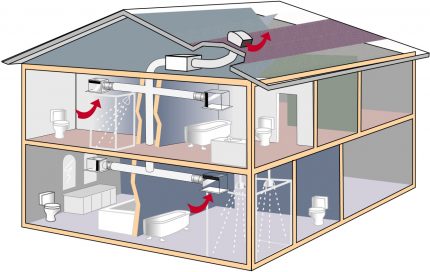
Particularly dangerous to human health and well-being is an excess of the first and a decrease in the second indicator. Then it’s hard to just be in the room, not to mention any productive activity.
When designing ventilation, the influence of physical obstacles must be taken into account. The latter include lamps placed on the ceiling, tiers, floors, columns, etc.

Audiences are non-standard rooms, which differ in a significant working area, a large number of listeners and a high ceiling. Accordingly, the approach to ventilation is quite specific.
A popular way is to supply fresh air directly under the seats of the listeners. It is believed that the incoming gases will warm up, rise to the ceiling and be removed from the room.
However, practice shows that this approach is wrong - gases behave in the same way as liquids. First, air gathers at the bottom of the audience and only after that rises.

Even well-reasoned calculations and computer simulations do not guarantee the most accurate prediction of the direction of air movement. However, it is necessary to take into account the number and location of the diffusers relative to each other, the placement of heating elements, obstacles and other factors.
Most studies regarding the arrangement of diffusers prove that mixing ventilation deserves arbitrary evaluation. For example, it is effective to place openings for air outlet at the entrance to the room from the rear desks.
But if you place the taps in other parts of the audience, then in most cases you will not be able to get the desired effect. A proper exchange helps prevent the formation of a strip of warm and exhaust air.
We also recommend that you read another article, where we described in more detail the principle of operation of supply and exhaust ventilation. More details - go to the link.
How does local ventilation work?
If air purposefully enters certain areas of the room or is removed from there, then such ventilation qualifies as local. The latter is divided into supply and exhaust.
Local supply ventilation requires much lower costs when used than general. It is popular in industrial premises that require quick gas updates. Allows to reduce moisture and temperature.
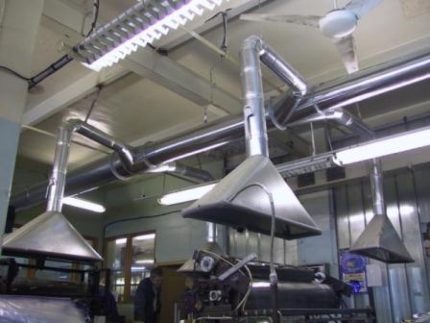
Local exhaust design is also used in industry. It is relevant for the removal of toxic substances, temperature reduction in a certain small part of the room. We described in more detail about ventilation of industrial premises in this article.
Allows you to prevent the consequences of the above and other negative factors. It has a positive effect on the comfort of employees, since harmful substances leave the room almost immediately after formation.
If work related to the release of toxic substances is carried out on the entire or a larger territory of the premises, then local ventilation will not be effective. However, it is still advisable to use it opposite the places with the largest emissions.
Conclusions and useful video on the topic
Video about local ventilation in a room with technological equipment:
The video explains the features and relevance of designing a ventilation system, its equipment options and installation nuances:
The video demonstrates the features of the standard ventilation system:
Each of the ventilation systems has its own characteristics. When choosing, you need to consider many factors: from the specifics of the use of the room to the presence of obstacles to the air flow. However, a careful approach will allow you to focus on the optimal ventilation system.
After studying the material, there were questions about the topic of the article? Or can you complement the above with valuable information? Please leave your comments, ask questions, share your experience in the block under the article.

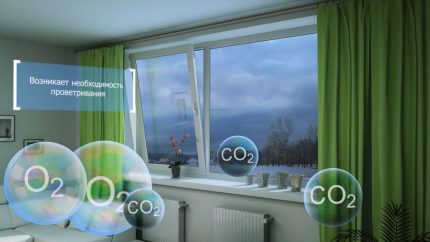
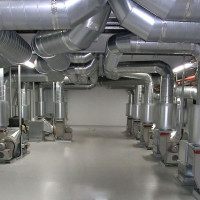 Cleaning and disinfection of air conditioning systems: requirements and procedure for cleaning
Cleaning and disinfection of air conditioning systems: requirements and procedure for cleaning 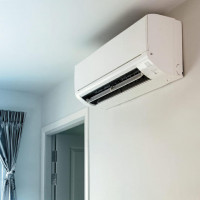 What is a split system: device and principle of operation of typical air conditioning systems
What is a split system: device and principle of operation of typical air conditioning systems 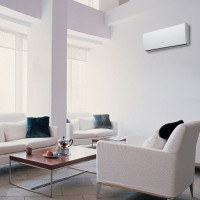 Air conditioning or split system - which is better? Comparative review
Air conditioning or split system - which is better? Comparative review  Why do you need a humidifier at home: the functions and purpose of the device for humidification
Why do you need a humidifier at home: the functions and purpose of the device for humidification 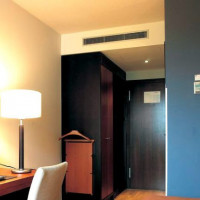 Air conditioner with fresh air supply: design and selection of a supply air split system
Air conditioner with fresh air supply: design and selection of a supply air split system 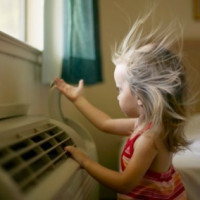 Maintenance of split systems: do-it-yourself cleaning, repair and refueling of HVAC equipment
Maintenance of split systems: do-it-yourself cleaning, repair and refueling of HVAC equipment  How much does it cost to connect gas to a private house: the price of organizing gas supply
How much does it cost to connect gas to a private house: the price of organizing gas supply  The best washing machines with dryer: model rating and customer tips
The best washing machines with dryer: model rating and customer tips  What is the color temperature of light and the nuances of choosing the temperature of the lamps to suit your needs
What is the color temperature of light and the nuances of choosing the temperature of the lamps to suit your needs  Replacement of a geyser in an apartment: replacement paperwork + basic norms and requirements
Replacement of a geyser in an apartment: replacement paperwork + basic norms and requirements
Already not the first generation of developers, as well as their immediate clientele, is asking the same question. Ventilation or condo? The traditional opposition is cheap vs additional protection against humidity (if there is a swimming pool or a bath) and even more so against harmful substances (although here according to the situation - how a banal extract can help, so maybe an air conditioner with artificial climate can not cope). My personal choice was very simple - there are two allergic people in the family, so we were not limited to the hood. But there will still be no general laws - the specifics of the development will still remain the main factor.
The question “Ventilation or air conditioning”, Yefim, does not exist - one complements the other. Reread the Air Conditioning Process section. By the way, the site has an article “Air conditioning with fresh air"- in the section" Supply duct models "describes" hybrid models ".
The market already offers apartment-type ventilation equipment that works in parallel with air conditioning. This means a program that stops the air conditioner while the air is being updated by ventilation. The screenshot shows the characteristics of such a gadget, which, incidentally, solves the issues of allergy sufferers.